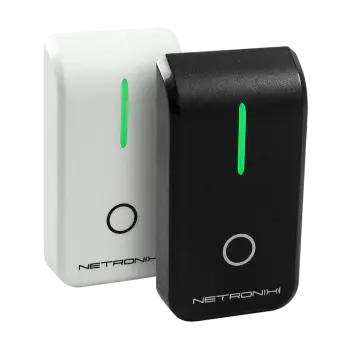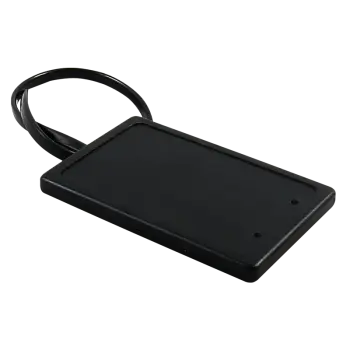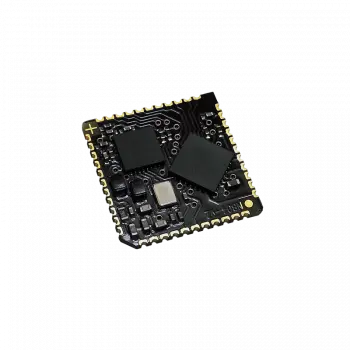Access to guarded zones or services granted on the basis of identity credentials is crucial in many applications, hence sophisticated encryption methods are necessary to maintain a high level of security in access control, payment or public transport applications. The NXP company and the MIFARE® DESFire® open standard developed by it since 2002, which from 2020 is already available in the EV3 version, comes to the rescue of these safety requirements.
The name DESFire refers to the use of hardware cryptographic engines DES, 2K3DES, 3K3DES and AES to secure data transmission. The MIFARE® DESFire® contactless integrated circuits are based on the 8051 processor with the 3DES/AES cryptographic accelerator, which enables very fast transactions. The MIFARE® DESFire® standard is ideally suited for integrators and system operators building reliable, interoperable and scalable proximity solutions. The DESFire standard will seamlessly integrate with mobile systems and can support multi-application smart card solutions in credentials, access control, loyalty programs and micropayments, as well as in public transport ticketing.
To read data from MIFARE® DESFire® transponders, appropriate readers or embedded modules are required. Netronix offers ready DESFire solutions compatible with the ISO/IEC 14443-2/3A contactless interface, working at a frequency of 13.56MHz and embedded modules, adapted for discreet assembly in customer applications.
DESFire® readers in the Netronix offer

- Modbus RTU
- "On metal"
MW-R8B / MW-R8G
MW-R8B / MW-R8G is a wall-mounted reader of RFID proximity cards and transponders from the MIFARE® Classic, Plus, Ultralight C, DESFire, ICODE® SLI, HID iCLASS (CSN only) families, operating at 13.56MHz. The reader is adapted to work on metal surfaces.

- Modbus RTU
MW-R4B / MW-R4G
MW-R4B / MW-R4G is a wall-mounted reader for RFID proximity cards and transponders from the MIFARE® Classic, Plus, Ultralight C, DESFire, ICODE® SLI, HID iCLASS (CSN only) families, operating at 13.56MHz.
Key differences between the generations of the MIFARE DESFire standard
| Cechy | MIFARE DESFire EV1 | MIFARE DESFire EV2 | MIFARE DESFire EV3 |
| Schematy kryptograficzne | Single DES, 2KTDEA, 3KTDEA, AES128 |
Single DES, 2KTDEA, 3KTDEA, AES128 |
Single DES, 2KTDEA, 3KTDEA, AES128 |
| Bezpieczne wiadomości | D40 Native, EV1 | D40 Native, EV1, EV2 (zobacz kartę katalogową) | D40 Native, EV1, EV2 (zobacz kartę katalogową) |
| Liczba aplikacji | 28 | Bez limitu | Bez limitu |
| Liczba plików na aplikację | 32 | 32 | 32 |
| Maksymalna liczba plików do backupu | 32 | 32 | 32 |
| Polecenia ISO/IEC7816-4 | 8 | 8 (refined) | 8 (refined) |
| Losowe ID | |||
| Konfigurowalny ATS | , tylko historyczne bajty | , wszystkie parametry | , wszystkie parametry |
| Maks. bufor komunikacyjny | 64 bajty | Do 128 bajtów | Do 256 bajtów |
| Tworzenie łańcucha podczas przesyłania danych | Natywny (AFh) | Natywny (AFh) lib ISO IEC14443-4 | Natywny (AFh) or ISO IEC14443-4 |
| Multiple Key Sets with rolling | - | ||
| MIsmartApp (Delegated Application Management) | - | ||
| Wsparice NXP AppXplorer | - | , samodzielna konfiguracja | , wstępnie załadowane klucze DAM |
| Shared Application Management - SAM | - | ||
| Wiele kluczy na prawo dostępu | - | ||
| Komenda UpdateRecord | - | ||
| Transaction MAC | - | ||
| Transaction Timer | - | - | |
| Secure Dynamic Messaging | - | - | |
| Virtual Card Architecture | - | ||
| Proximity Check | - | ||
| Originality Check | - |
Żródło tabeli: NXP Semiconductors Austria GmbH Styria / Tłumaczenie: Netronix Sp. z o.o.




